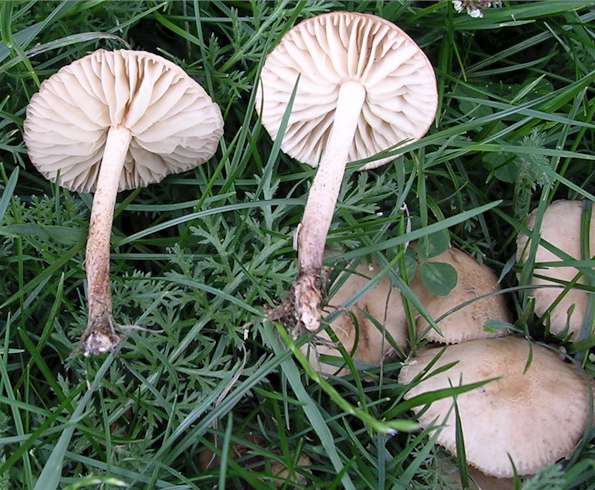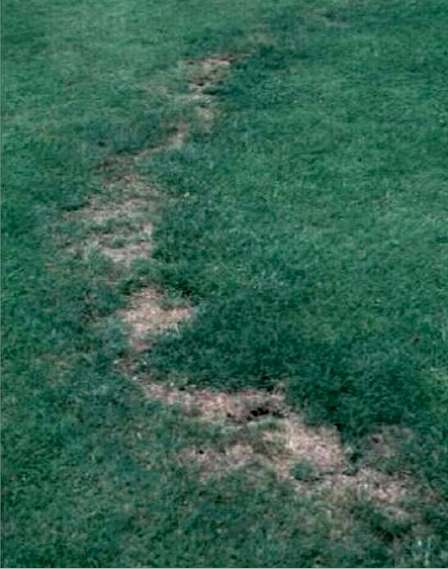..
BASIDIOMYCOTA: "FAIRY RING" FUNGI OF GRASSLANDS Several common decomposer fungi grow on the accumulated "thatch" of dead roots and basal stem tissues in natural or amenity grasslands, including sports turf. The most common of these fungi are the Hygrocybe species, commonly known as "wax caps" because of their waxy texture and appearance. Many of them produce strikingly coloured fruitbodies. These fungi cause no significant damage to the grass turf, and often the only visible symptom of their presence is a slowly expanding ring of turf that is lusher and deeper green. This results from the breakdown of dead organic matter, releasing nitogenous nutrients that locally stimulate growth of the turf. There are more than 200 species of wax caps, including more than 50 in Britain. The examples shown below have caps about 3-4 cm diameter.
In contrast to the Hygrocybe spp, which cause little or no damage to grassland, the common fungus Marasmius oreades (" Fairy Ring Champignon") can cause significant damage to grass turf and adversely affect the playing qualities of sports turf. Again, this fungus grows on the accumulated thatch of dead turf, and spreads progressively outwards as a ring. But it can locally kill the turf as it spreads progressively into new zones of turf (see the images below). There has been speculation that this fungus might kill the turf by producing toxins, but this has never been substantiated. Instead, the killing zone is likely to be caused by the mass of Marasmius hyphae just below the soil surface. These hyphae are strongly hydrophobic (repelling water) and so they can prevent the turf from absorbing water, leading to grass death. In fact, one of the best ways of preventing the turf from dying is to apply a surfactant, such as diluted washing-up liquid.
|




